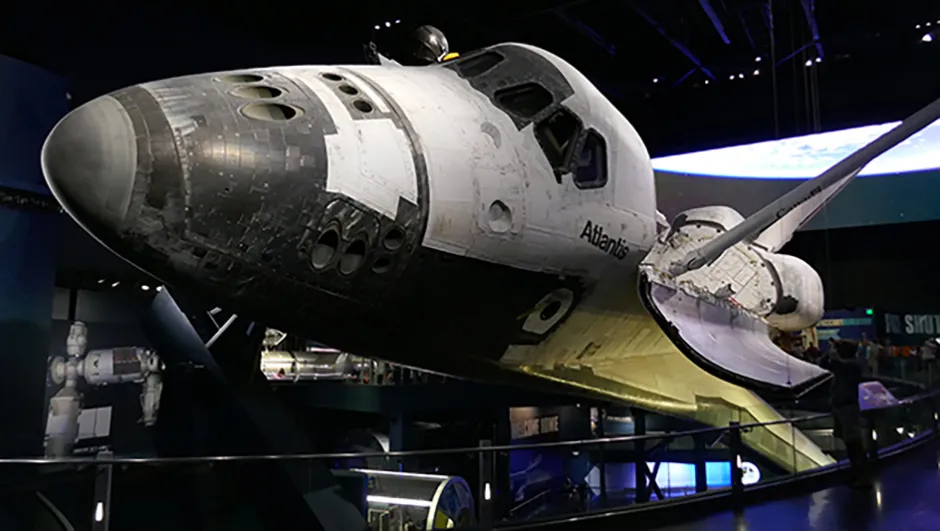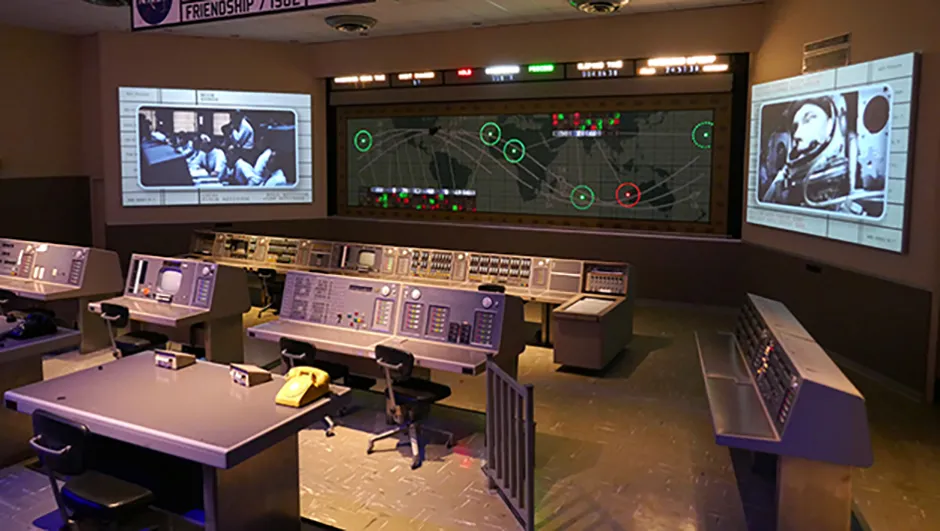Welcome to the Space Coast, home to NASA’s Apollo and Space Shuttle programs, and also to a host of new private companies looking to commercialise space travel.The John F. Kennedy Space Center (KSC) is best visited during a rocket launch; perhaps of a SpaceX Falcon 9 reusable rocket, the first stage of which makes a vertical landing nearby a few minutes later.
However, when you come here, the Kennedy Space Center Visitor Complex is now a must-see for anyone interested in spaceflight, present or past.
And with a one-day ticket ($50/$40 adults/kids) it’s possible to pack-in some incredible sights and experiences.
Kennedy Space Center Bus Tour

Included with your ticket, the 45-minute Kennedy Space Center Bus Tour is the best way to begin your day.
First stop is NASA’s Vehicle Assembly Building (VAB), a monster of a structure the equivalent of 52 storeys high, where engineers assemble rockets.
As you get closer to Pad 39A, home not only of Apollo and Space Shuttle launches, but also SpaceX rockets bound for the International Space Station, you pass the colossal crawler-transporter that moves rockets from VAB to pad.
Bizarrely, there's a fence around the launchpad that curves outwards at the top to stop the local alligators from climbing in.
It's true!
It’s an eye-opening tour, though there’s a drive-by feel to it; you can’t leave the bus, and all photos have to be taken through the windows.
Note that if you are in the area to watch a rocket launch, the bus tour likely won't get too close to Pad 39A (or the nearby 39B).
Apollo/Saturn V Center

Though the chance to see Pad 39A is unmissable, the biggest reason for doing the Kennedy Space Center Bus Tour is the half-way stop at the Apollo/Saturn V Center.
Inside a giant hangar is one of three remaining unused Saturn V rockets.
Seeing this 363ft-long ’Moon’ rocket up close is a jaw-dropping moment.
Producing 7.5 million pounds of thrust, it was launched 13 times from KSC, with not a single failure of its five enormous first-stage F-1 engines.
Also here is the lunar lander left unused by the cancelled Apollo 18 mission, as well as the Apollo 14 Command Module 'Kitty Hawk', and a touching tribute to the three astronauts who died in the Apollo 1 fire in 1967: Gus Grissom, Edward White and Roger Chaffee.
Rocket Garden

Collected together just inside the entrance to the KSC Visitor Complex are the rockets used by the Mercury, Gemini and Apollo space programs.
Perhaps the highlight is the Mercury-Redstone 3 rocket; nothing more than a modified missile that took Alan Shepard to space in 1961 in Freedom 7, kicking off the space race that resulted in the 1969 Moon landing.
Don’t miss the 20-minute guided tour, or the chance to sit inside a Gemini 7 capsule, in which astronauts Frank Borman and Jim Lovell orbited Earth for a gruelling 14 days in 1965.
Cramped is not the word!
Space Shuttle Atlantis

Nothing prepares you for seeing a Space Shuttle up close.
The way it’s presented – hanging from the ceiling and seemingly in flight – creates a goosebumps moment.
The cargo doors are open, and the observing deck goes right up close to the wings.
It’s also possible to walk underneath and see the individual heat tiles.
This is KSC’s best exhibit by far, with fabulous explanatory boards, simulators for landing the orbiter (good luck – it’s impossible!) and a life-size mock-up of the Hubble Space Telescope that was both launched and fixed by Space Shuttles.
There’s also a tribute to the Challenger and Columbia disasters of 1986 and 2003.
NASA does not forget its heroes.
Heroes & Legends, Journey To Mars & NASA’s Orion capsule

The other attractions at KSC are, in reality, more time fillers than must-see sights.
Heroes & Legends is a tad nationalistic, high on hyperbole and low on detail, as is the U.S. Astronaut Hall of Fame.
The Journey To Mars exhibit is worth a visit if only to see lifesize mock-ups of the robotic ATHLETE Rover and Space Exploration Vehicle for travelling around the Martian surface.
The IMAX 3D theatre is also worth a visit, not only because one movie is included in the ticket price, but because you’ll need a sit-down (most of KSC is standing room only, and it’s a really long day).
Just outside is a life-size model of NASA’s Orion crew capsule, which is destined to one day carry four astronauts to low Earth orbit and beyond.
Further afield

Although there are enough gripping exhibits of NASA’s past to fill at least eight hours, those wanting more detail should consider paying extra for a special bus tour of Cape Canaveral Air Force Station next door, where the Project Mercury and Gemini launches occurred.
And if you doubt that Cape Kennedy remains the centre of space exploration, check-out the vast construction site close-by; it’s the new home of Blue Origin, which plans to launch from KSC reusable rockets even larger than those of SpaceX.
You might come here for the history, particularly the Apollo connections, but Cape Kennedy and KSC looks set to return to being the epicentre of human spaceflight once again.
